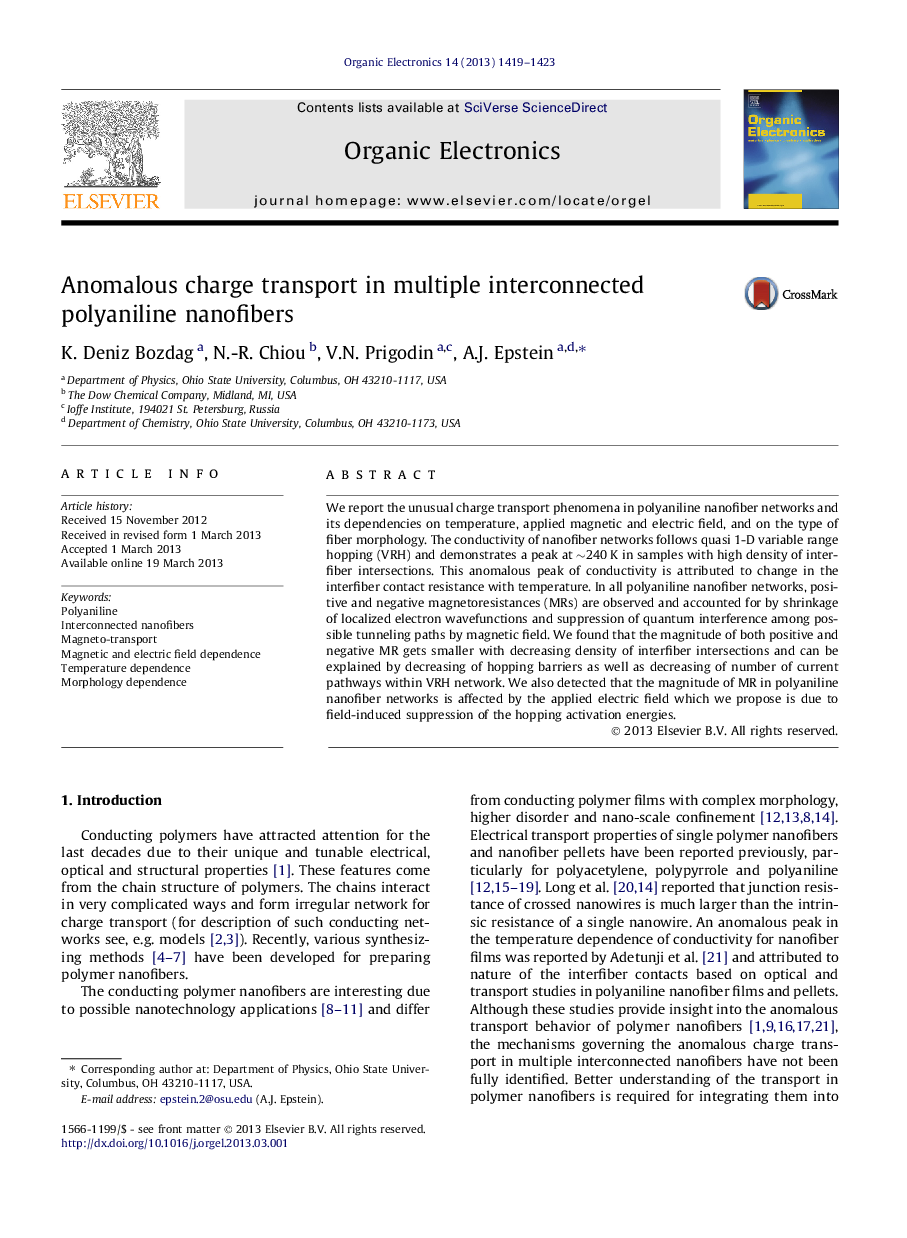| Article ID | Journal | Published Year | Pages | File Type |
|---|---|---|---|---|
| 10566164 | Organic Electronics | 2013 | 5 Pages |
Abstract
We report the unusual charge transport phenomena in polyaniline nanofiber networks and its dependencies on temperature, applied magnetic and electric field, and on the type of fiber morphology. The conductivity of nanofiber networks follows quasi 1-D variable range hopping (VRH) and demonstrates a peak at â¼240Â K in samples with high density of interfiber intersections. This anomalous peak of conductivity is attributed to change in the interfiber contact resistance with temperature. In all polyaniline nanofiber networks, positive and negative magnetoresistances (MRs) are observed and accounted for by shrinkage of localized electron wavefunctions and suppression of quantum interference among possible tunneling paths by magnetic field. We found that the magnitude of both positive and negative MR gets smaller with decreasing density of interfiber intersections and can be explained by decreasing of hopping barriers as well as decreasing of number of current pathways within VRH network. We also detected that the magnitude of MR in polyaniline nanofiber networks is affected by the applied electric field which we propose is due to field-induced suppression of the hopping activation energies.
Related Topics
Physical Sciences and Engineering
Chemistry
Chemistry (General)
Authors
K. Deniz Bozdag, N.-R. Chiou, V.N. Prigodin, A.J. Epstein,
